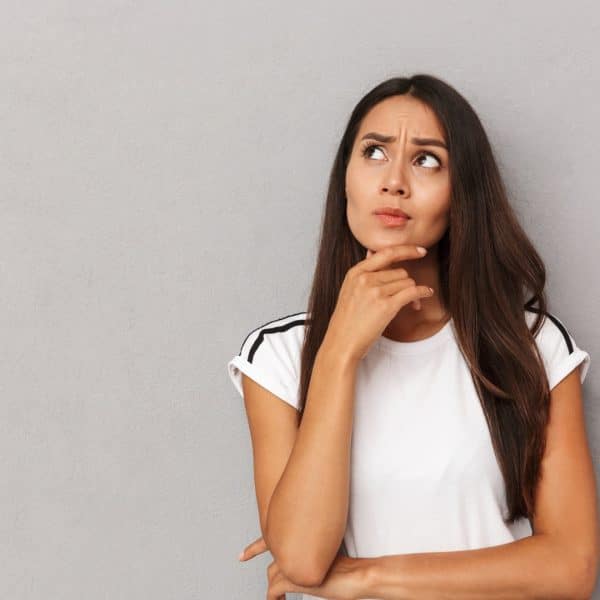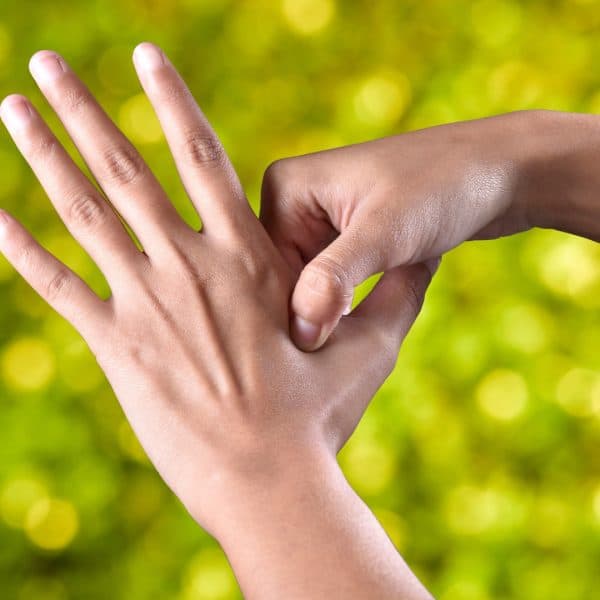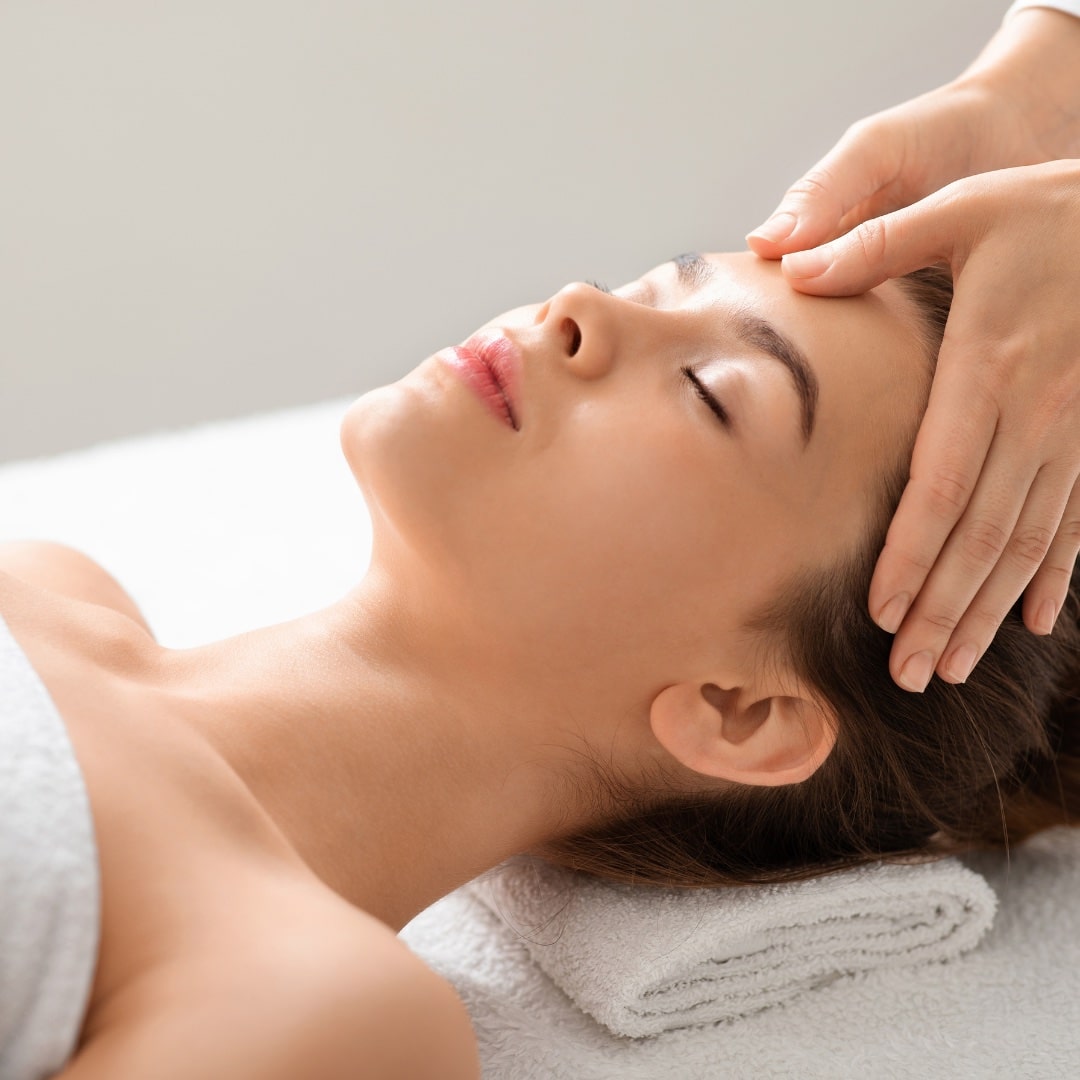Please note: This post contains Amazon affiliate links. As an Amazon Associate, I earn from qualifying purchases. This will in no way impact the price you pay. Affiliate links in this article are denoted with an asterisk (*).
Anxiety can be tough to deal with, but there are ways to manage it. One effective method is acupressure, an old healing technique from Traditional Chinese Medicine (TCM). It’s easy to do at home and can make a big difference in your overall well-being. In this guide, we’ll explore how you can use DIY acupressure to relieve anxiety. We’ll answer important questions and give you practical tips to help you get started and see real results.

What is Acupressure?
Acupressure is an ancient healing technique rooted in Traditional Chinese Medicine (TCM) that has been practiced for thousands of years. It involves applying pressure to specific points on the body, known as acupoints, to promote healing, alleviate pain, and restore balance to the body’s energy flow, known as “Qi” (pronounced “chee”).
In TCM, it’s believed that Qi flows through pathways in the body called meridians. When the flow of Qi is blocked or unbalanced, it can lead to various health issues, including anxiety, pain, and illness. By stimulating the acupoints, acupressure helps to clear these blockages, allowing Qi to flow freely and harmoniously through the body.
Acupressure can be performed using fingers, thumbs, or special tools to apply pressure. The technique is similar to acupuncture but without needles. It can be done anywhere, making it a convenient and accessible form of self-care.
Acupressure is not only used for anxiety but also for a wide range of conditions, including headaches, muscle tension, digestive issues, and chronic pain. It is a holistic approach that considers the entire body and mind, aiming to treat the root causes of health problems rather than just the symptoms.
In addition to physical benefits, acupressure can also promote mental and emotional well-being. It encourages relaxation, reduces stress, and enhances the overall quality of life. By incorporating acupressure into your daily routine, you can harness the power of this ancient practice to support your health and wellness.
Is There A Connection Between Autoimmune Disease And Anxiety
Anxiety and autoimmune diseases can sometimes be related. When you have an autoimmune disease, your immune system mistakenly attacks your body, causing inflammation and other symptoms. Living with a chronic illness can be stressful and overwhelming, which can lead to anxiety. The constant pain and discomfort, along with worries about your health, can make anxiety even worse.
Interestingly, some research suggests that the inflammation caused by autoimmune diseases might also play a role in developing anxiety. Inflammation can affect your brain and change how it functions, which might lead to feelings of anxiety. So, managing anxiety is important for people with autoimmune diseases to help them feel better overall.
Can Acupressure Help Relieve Anxiety
Acupressure is a great way to help control anxiety. By pressing on specific points on your body, acupressure can help balance your energy, reduce stress, and promote relaxation. This can be especially helpful for people with autoimmune diseases because it can help manage both the anxiety and some of the physical symptoms caused by inflammation.
Regular acupressure sessions can help lower your anxiety levels and improve your mood. It’s a simple, natural method that you can do at home to support your overall well-being. Combined with other treatments, like medication and healthy lifestyle choices, acupressure can be a valuable part of managing anxiety and living better with an autoimmune disease.

What You Need To Know About DIY Acupressure For Anxiety Relief
1. What Are the Best Acupressure Points for Relieving Anxiety?
Here are some of the best points for anxiety relief:
- Yin Tang (Hall of Impression): This point is between your eyebrows. It helps calm the mind and reduce stress.
- Pericardium 6 (Neiguan): Located three finger-widths below the wrist on the inner forearm, it helps with anxiety, nausea, and palpitations.
- Heart 7 (Shenmen): On the wrist crease in line with the little finger, this point helps balance emotions and calm the mind.
- Governing Vessel 20 (Baihui): Found at the top of the head, it helps clear the mind and relieve stress.
- Kidney 1 (Yongquan): On the sole of the foot, this point helps ground and calm the body.
2. How Do I Perform DIY Acupressure for Anxiety Relief at Home?
Doing acupressure at home is easy and can help with anxiety. Here’s how to do it:
- Find a Quiet Place: Choose a calm spot where you won’t be disturbed.
- Relax and Breathe: Sit or lie down comfortably, and take a few deep breaths to relax.
- Locate the Points: Use the descriptions above to find the acupressure points.
- Apply Gentle Pressure: Use your thumb or index finger to apply firm but gentle pressure to each point.
- Massage: Press and hold the point for about 1-2 minutes or massage it in a circular motion.
- Repeat: Move to the next point and repeat. You can do this several times a day if needed.
3. How Effective Is Acupressure for Treating Anxiety Symptoms?
Acupressure is very effective for treating anxiety symptoms. By pressing on certain points, acupressure helps the body’s energy flow and balances its systems. Many people find that regular acupressure sessions can reduce anxiety, improve mood, and enhance overall well-being.
Unfortunately, there’s limited research on acupressure and anxiety. A 2015 review of several studies found acupressure helpful in relieving anxiety before a medical procedure like surgery. A separate 2015 study found that acupressure helped relieve anxiety in cancer patients undergoing treatment. A 2018 study found it helped relieve stress and anxiety in women having fertility treatments.
4. Can Acupressure Help with Panic Attacks and Acute Anxiety?
Yes, acupressure can help with panic attacks and acute anxiety. Pressing on points that calm the nervous system and reduce stress can provide quick relief during an anxiety episode. For example, pressing on the Pericardium 6 point during a panic attack can help reduce symptoms fast. It’s a good idea to combine acupressure with other techniques like deep breathing or mindfulness for the best results.
5 How Long Should I Apply Pressure to Acupressure Points for Anxiety?
For effective anxiety relief, press each acupressure point for about 1-2 minutes. This lets your body respond to the stimulation and start relaxing. You can do this several times a day, especially during stressful times. Consistency is key to seeing the full benefits of acupressure.
6. Are There Any Risks or Side Effects of DIY Acupressure for Anxiety?
Acupressure is generally safe if done correctly, but here are a few things to keep in mind:
- Soreness or Bruising: Pressing too hard can cause soreness or bruising. Always use gentle pressure.
- Pregnancy: Some acupressure points can induce labor, so pregnant women should talk to a doctor before trying acupressure.
- Medical Conditions: If you have any health conditions or are unsure about acupressure, consult a professional.
7. What Tools Can I Use to Enhance My DIY Acupressure Routine?
Here are some tools that can enhance your acupressure routine:
- Acupressure Mats: These mats* have small spikes that stimulate multiple points on your back and can be used while lying down.
- Acupressure Bands: Worn around the wrist or ankle, these bands target specific points.
- Massage Balls: Small balls* that can be used to press various points on the body.
- Electric Acupressure Devices: These provide targeted stimulation and can help with precise point application.
8. How Often Should I Practice Acupressure to See Results in Anxiety Relief?
To see results, practice acupressure daily. Even short sessions of 5-10 minutes can be effective if done consistently. Regular practice helps keep the body balanced and reduces overall anxiety levels. Over time, you’ll likely find that your ability to manage stress improves a lot.
9. Which Acupressure Points Are Easiest for Beginners to Find and Use?
For beginners, these points are the easiest to locate and use:
- Yin Tang: This point is easy to find and press between the eyebrows.
- Pericardium 6: On the inner forearm, three finger-widths below the wrist, this point is easy to access.
- Heart 7: On the wrist crease in line with the little finger, this point is easy to locate.
- Governing Vessel 20: At the top of the head, this point is easy to press with fingers.
- Kidney 1: On the sole, this point can be easily accessed while sitting or lying down.
10. Can Acupressure Combine Other Anxiety Treatments Like Meditation or Yoga?
Yes, acupressure can be combined with other anxiety treatments like meditation, yoga, and deep breathing exercises. These practices work well together to enhance overall relaxation and stress relief. For example:
- Meditation: Combine acupressure with meditation to deepen relaxation. Focus on your breathing and the sensation of pressing the points.
- Yoga: Use acupressure before or after your yoga practice to enhance relaxation and balance.
- Deep Breathing: Practice deep breathing while applying pressure to acupressure points to maximize the calming effect.
Conclusion
Acupressure is a great, natural way to relieve anxiety and promote relaxation. By regularly practicing DIY acupressure and combining it with other stress-relief techniques, you can effectively manage anxiety symptoms. Remember to be consistent and gentle, and consult a healthcare professional if you have any concerns. With time and practice, acupressure can become a valuable tool in your anxiety management toolkit.
Incorporate acupressure into your daily routine, and you’ll likely notice a significant improvement in your overall well-being and anxiety levels. Whether you’re dealing with chronic anxiety or panic attacks, acupressure offers a simple, effective way to take control of your mental health and promote a sense of calm and balance in your life.
Have you ever tried DIY acupressure for anxiety relief? I’d love to hear about your experience! Did it help you feel more relaxed and manage your anxiety better? Your stories and tips can inspire others to give acupressure a try. Share your thoughts in the comments below and let me know which acupressure points worked best for you. If you have any questions or need more advice, don’t hesitate to ask. Let’s support each other on this journey to better mental health and well-being!
***Disclaimer: This post is for informational purposes only and should not be construed as medical advice***


